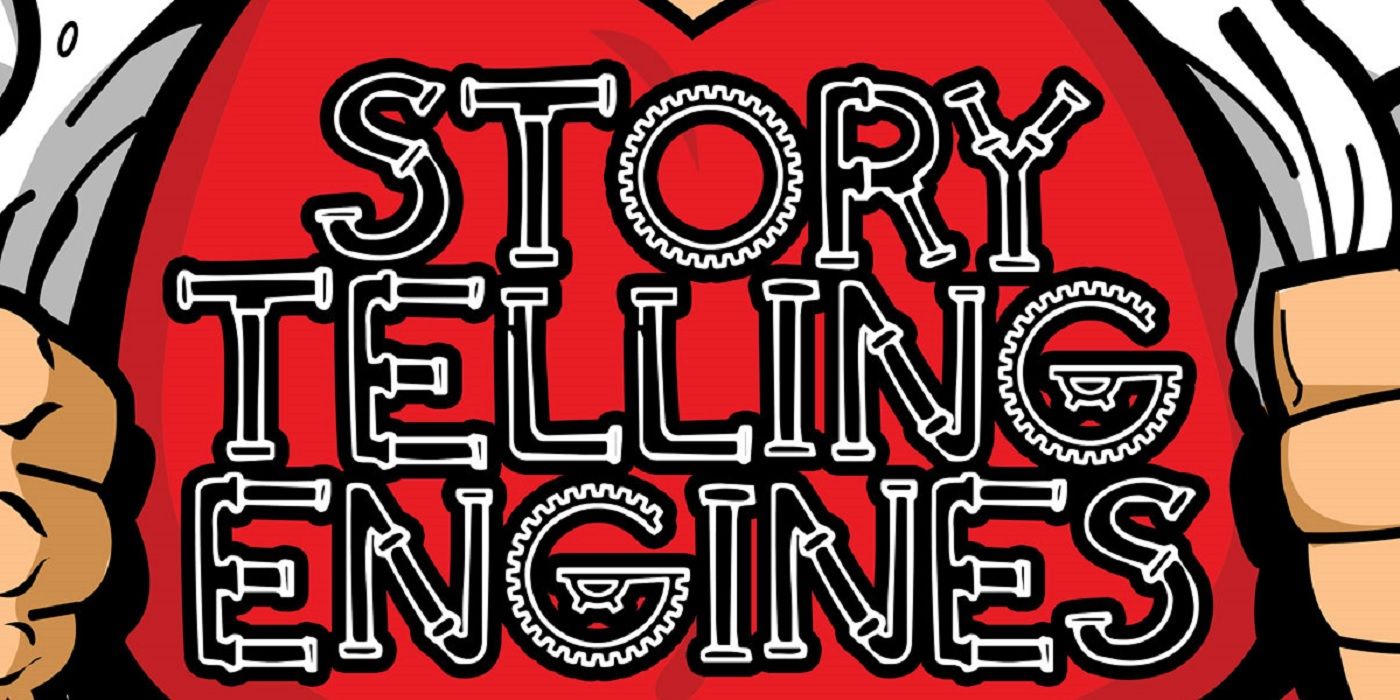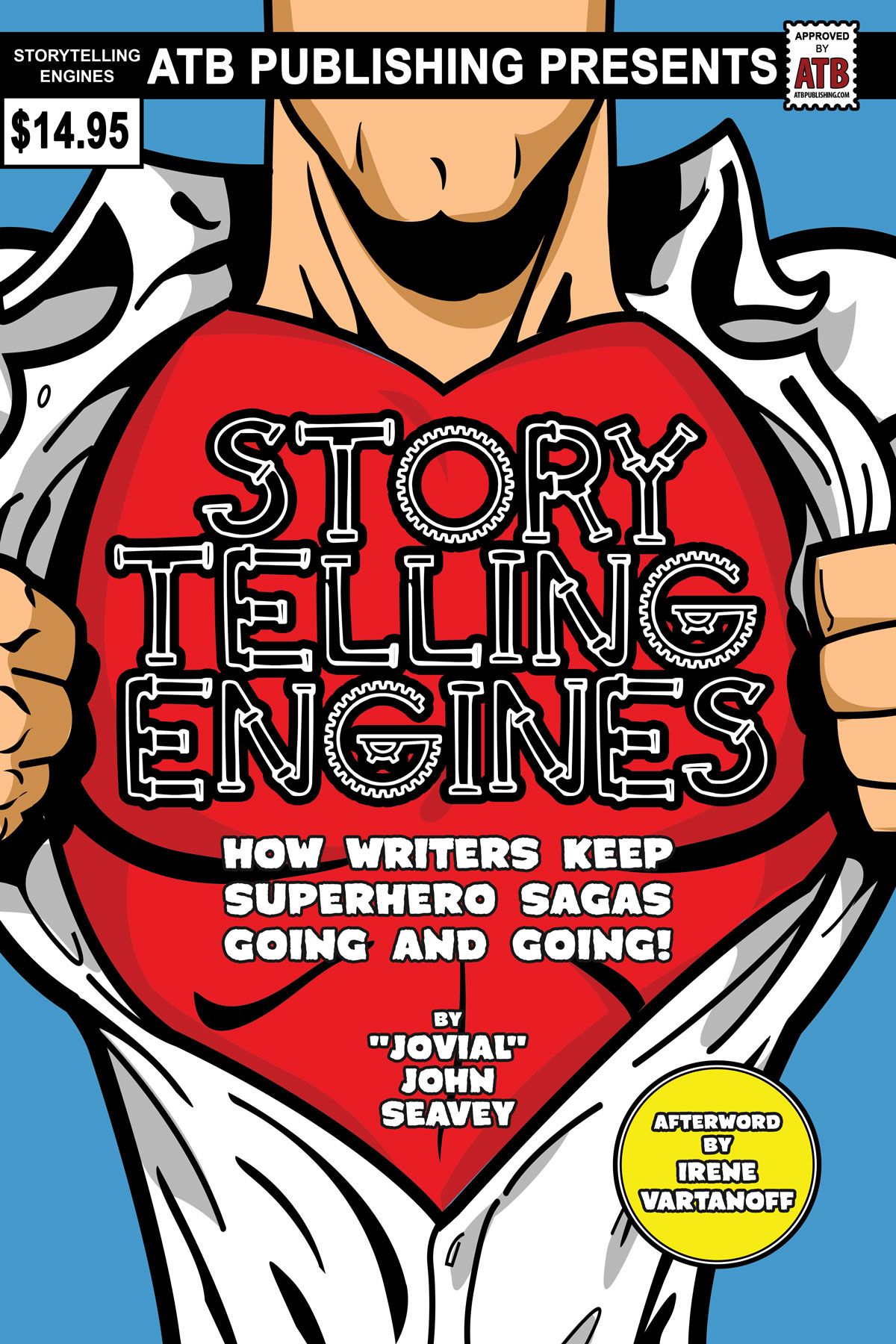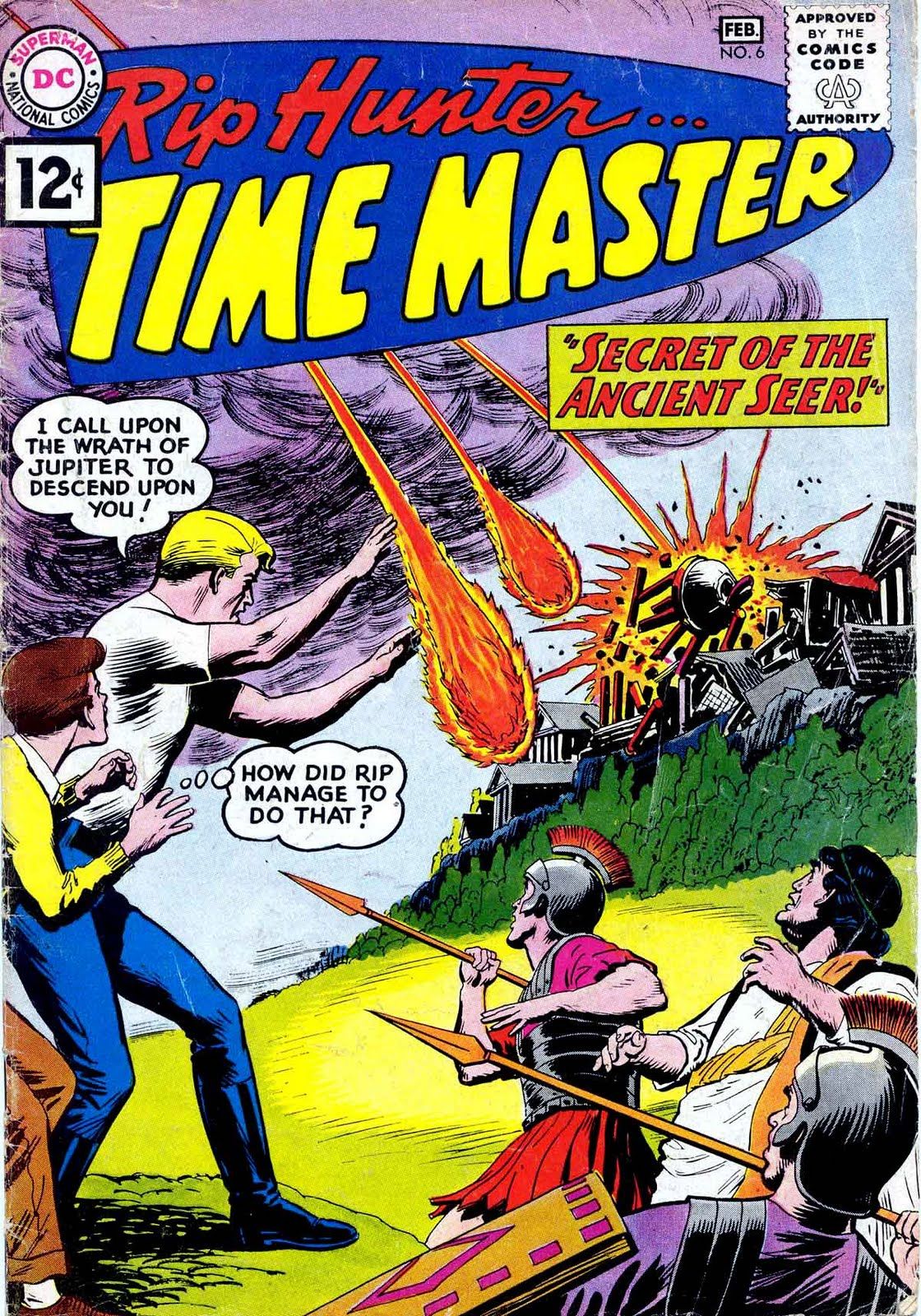For a couple of years, John Seavey would cross-post his "Storytelling Engines" posts on CSBG. These would be columns about, essentially, what made ongoing series "go"? What was the driving force behind something, like, say, Batman? What are the motivations and character bits that helped writers to keep coming up with new Batman stories?
Anyhow, a bunch of these columns were collected in a new book (plus a bunch of brand-new ones unique to the book) from ATB Publishing. You can check it out here.
I always enjoyed John's Storytelling Engines columns (hence, you know, them being cross-posted on CSBG), so when John told me about the new book, I said that we should have an exclusive excerpt from the book on the site.
Anyhow, here is a chapter from the book that deals with the storytelling engine for the comic book character (years before he was a TV star) Rip Hunter, Time Master!
RIP HUNTER, TIME MASTER: WARPED INTO SHAPE
Like many of the great Silver Age characters—and quite a few of the not-so-greats—Rip Hunter got his start in the pages of Showcase. His original four-issue run displayed the economy of storytelling so typical of the Silver Age; on page one, Rip announced to his supporting cast—friend Jeff, girlfriend Bonnie, and Bonnie’s peppy kid brother, Corky—that he’d finished his time machine and was ready to use it to solve historical mysteries, and off they went into the distant past. Various complications ensued in the first story, mostly involving difficulties in getting back to the “time sphere,” but the basic storytelling engine was established almost immediately. In each story, Rip and his crew would be presented with an intriguing historical mystery, and they’d travel back in time to study it; along the way, they’d have to deal with the hostile and superstitious local inhabitants of that time period, who feared and distrusted their futuristic “science.”
But a funny thing happened to Rip Hunter on the way from his appearances in Showcase to his most recent incarnation in the DC Universe; it became obvious that his original storytelling engine wasn’t actually that exciting. Well-researched, historically accurate stories about an archaeologist solving historical mysteries might be educational, but they don’t really entice readers to grab your comic off the rack when it’s sitting next to time travel adventures that were limited only by the imagination of the writers. The first story rang in some gangsters to keep things interesting, but there were only so many times you could have gangsters trying to steal the time sphere before it got old. Clearly, the series needed to incorporate elements of the fantastic in order to keep readers’ attention.
And so, as early as the second story, Rip wound up fighting aliens on his trips through Earth history. Aliens turned out to be responsible for the destruction of Atlantis, aliens turned out to be behind the Greek and Egyptian gods, aliens inhabited the Earth long before humanity ever existed—in the sci-fi-crazy ’50s, kids couldn’t get enough exotic aliens, so Rip Hunter rewrote its premise to match the tastes of its audience. Just about every story involved an alien monster of some sort, and those that didn’t involved renegade time travelers out to use a time machine—either Rip’s time sphere or their own invention—for personal gain.
It was this last idea that would prove to be the most enduring part of Rip Hunter’s eventual storytelling engine, long after the cancelation of his own series in 1965. When the character was eventually given a revival mini-series in the mid-’80s, it was as a protector of the history of the DC Universe. Said fictional history had recently undergone massive changes in the wake of Crisis on Infinite Earths, and Rip Hunter was perfectly placed to act as a narrator, making the changes a part of the narrative and explaining them in an accessible manner to the readers. By then, given the preoccupation among fans and creators alike with alterations to established history, readers were almost bound to get a series about a superhero who prevented malicious retcons. But more than that, having a hero who fought to protect history had more drama and higher stakes than someone wandering back in time to figure out why an old coin had his features on it, or to learn about the history of a family curse. These new stories had a greater sense of urgency, and even though they didn’t lead to a new ongoing series, they did lead to a new niche for Rip as DC’s resident time travel expert.
In this role, Rip Hunter showed up several times in a variety of series from Swamp Thing to Superman, as well as becoming a feature player in the next round of DC retcons presented in Zero Hour: Crisis in Time. He even established an entire group of protectors of the time stream called the Linear Men, but almost as soon as they showed up, Rip rebelled against their overly rigid and dictatorial control of history. Instead of becoming the leader of a structured, formal organization—with the tedious sequences of paperwork and bureaucracy that entailed—Rip became a renegade time traveler. Being a “renegade” sounded more exciting, especially to audiences of the ’90s.
Even so, it wasn’t until the last decade that he made a regular return to the comic book pages, first in the series 52 and later in the relaunched Booster Gold comic. In this aspect, he was a troubled and manipulative soul, constantly worried about the dangers of time travel and willing to be ruthless to make sure that his established version of history remained the correct one. It was even implied that he was the survivor of an attempt to wipe out his own personal history, one that claimed the other Linear Men and many of his supporting cast over the years. This darker, more manipulative Rip Hunter remains a significant figure even in the post-reboot DC Universe; for writers who may not be quite ready to let go of the old DC continuity just yet, he has become a figure through which they can tell nostalgic stories about the vanished past without having to undo their own reboots.
Oddly enough, all of this forms a tremendously accurate parallel to the career of another famous fictional time traveler. The Doctor, from the long-running series Doctor Who, also started as a student of history whose stories were intended to edify the young and old alike, only to become a fighter of bug-eyed monsters when it became clear that there were only so many ways he could get separated from his time machine while exploring before it got old. He too fought renegade time travelers and his own people before losing them in a vast Time War that left him a battle-scarred veteran. The similarities are so striking, they’re downright eerie.
This isn’t to say that Doctor Who stole its ideas from Rip Hunter, or that Rip Hunter stole its ideas from Doctor Who. Either one of them could have stolen from the other at different points in the two series’ long, involved history, but neither one of them did; both of them simply followed the path of greatest excitement. Taking the same starting point—a main character with a time machine—they both undertook changes to make the series more interesting and exciting to their audiences, adding mystery and drama to their protagonists, and suspense and importance to their plots. It’s no surprise that they wound up in similar places when they finished manipulating their own respective narrative timelines; after all, who’d want to make their series less fun?
Fascinating stuff, John! Okay, folks, go pick up a copy today!



